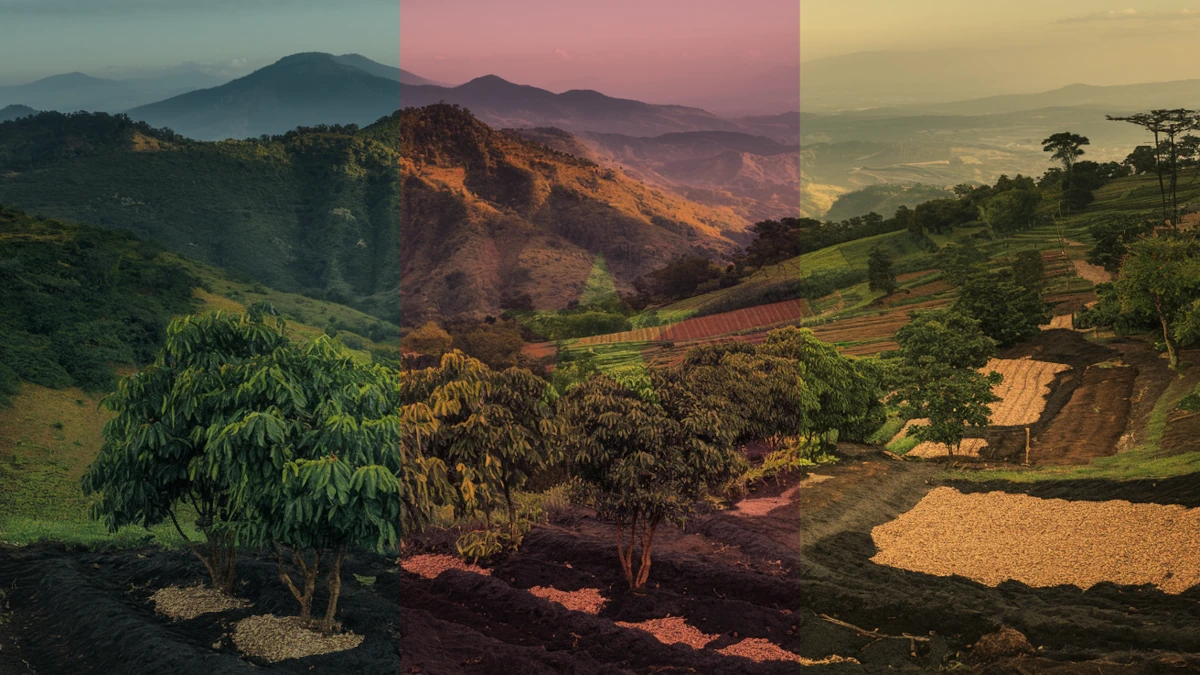Cameroon coffee, known for its bold flavors and storied past, is a hidden treasure in the world of specialty coffee. From its introduction during German colonial times to its current struggles and potential revival, Cameroon coffee offers a rich narrative alongside diverse and unique beans. This article delves into its history, flavor profiles, growing regions, challenges, and prospects.
Table of Contents
The Rich History of Cameroon Coffee
Coffee’s Introduction to Cameroon
The history of coffee in Cameroon begins in the late 1800s when German colonizers introduced coffee plants. The trial gardens established during this period identified regions with ideal climates and soil conditions for coffee cultivation. By the mid-20th century, coffee production had peaked, solidifying Cameroon as a significant player in the global market.
Decline in Production
Despite its early success, the coffee industry in Cameroon faced a steep decline starting in the 1990s. Market liberalization policies and the removal of government subsidies left farmers struggling with high production costs. Many shifted to cultivating cacao, which offered more reliable income. As a result, Cameroon dropped from being the eighth-largest coffee producer globally to its current ranking of 27th.
Unique Flavor Profiles of Cameroon Coffee
Arabica vs. Robusta in Cameroon
- Arabica Coffee: Typically grown in high-altitude regions, Cameroonian Arabica beans exhibit fruity, wine-like flavors with a bright acidity.
- Robusta Coffee: Thriving in lower altitudes, these beans offer a heavier body with cocoa and nutty undertones, ideal for bold espresso blends.
What Makes Cameroon Coffee Unique?
The volcanic soils and diverse microclimates across Cameroon contribute to the coffee’s distinctive taste profiles. Local processing methods, although inconsistent at times, also add a unique character to the beans, differentiating them from other coffee origins.
Key Coffee-Growing Regions in Cameroon
Western Highlands (Bamenda Highlands)
The Western Highlands, particularly around Bamenda and Bafoussam, are home to premium Arabica coffee. The region’s cool temperatures and fertile volcanic soils produce beans with complex flavors and bright acidity.
Northwest Region
High-altitude areas like Boyo and Nkambe yield Arabica coffee renowned for its fruity and wine-like characteristics, a result of the cooler climate and meticulous cultivation practices.
Southwest Region
Located near Mount Cameroon, this area benefits from rich volcanic soils. It is notable for producing both Arabica and Robusta beans with bold, full-bodied flavors.
Littoral and Central Regions
These warmer regions, including Douala and Mbam, are hubs for Robusta coffee production. The beans are known for their strong, earthy profiles, commonly used in blends and instant coffee.
Eastern Region
The humid conditions around Bertoua favor Robusta cultivation, contributing significantly to Cameroon’s overall production.
Challenges Facing Cameroon Coffee Production
Aging Coffee Trees and Low Yields
Many of Cameroon’s coffee trees are decades old, resulting in reduced yields and quality. Farmers lack the resources to replant or rejuvenate these trees, further exacerbating the problem.
Poor Farming Practices and Limited Resources
Smallholder farmers often have limited access to fertilizers and modern agricultural techniques. This reliance on traditional methods hampers productivity and quality.
Coffee Processing and Quality Issues
Home-based processing methods lead to inconsistent bean quality, making it harder for Cameroonian coffee to compete on the global market.
Conflict and Infrastructure Problems
The ongoing Anglophone Crisis has disrupted farming activities and infrastructure. Poor roads and security concerns hinder farmers’ access to markets, leading to significant losses.
Revitalization Efforts and the Road Ahead
National Coffee Rehabilitation Project
Cameroon’s government is taking steps to address these issues through initiatives like the National Coffee Rehabilitation Project. This program aims to provide farmers with financial support, modern farming techniques, and new coffee plant varieties.
Promoting Domestic Consumption
Encouraging Cameroonians to embrace coffee culture can help boost local demand, providing a more stable income for farmers.
Global Recognition and Potential for Growth
With proper investment in quality control and marketing, Cameroon coffee has the potential to regain its place on the international stage. The unique flavors and rich history of Cameroonian beans make them a compelling choice for specialty coffee consumers.
Conclusion
Cameroon coffee embodies bold flavors and a rich history, making it a valuable yet underappreciated player in the global coffee industry. Despite facing significant challenges, the country’s coffee sector has immense potential for growth. By supporting revitalization efforts and exploring the diverse beans Cameroon has to offer, you can help preserve this remarkable coffee heritage.
